High Inflation Leading To Malnutrition In Iran: Daily
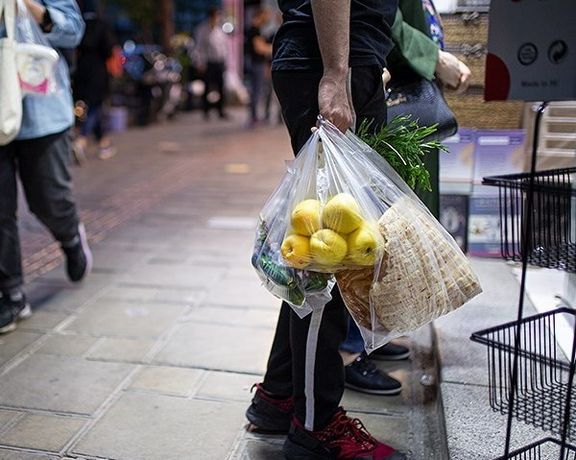
While the food prices in Iran are soaring, reports say many are facing malnutrition and lawmakers have also predicted a 60% inflation for the next Iranian year which begins in March.

While the food prices in Iran are soaring, reports say many are facing malnutrition and lawmakers have also predicted a 60% inflation for the next Iranian year which begins in March.
Ham-Mihan centrist daily reported Monday that the malnutrition rate in the country is on the rise and the consumption of dairy products has fallen to half of the world average.
"Dairy consumption in Iran has fallen to about half of the average per capita consumption in the world, and the elimination or reduction of red meat has affected the health of families and children," added the daily.
The report titled "On the road to hunger" said based on the health ministry figures “About 16% of children under the age of six are malnourished, and 800,000 children of growing age are facing lack of energy and protein.”
On Sunday, Morteza Hosseini, a member of parliament said “we may experience price increases in some goods up to 60%.”
Earlier, another MP Kioumars Sarmadi had warned that a planned 20% salary increase for civil servants despite the 40% inflation rate, means a 50% decrease in their purchasing power in the next year.
Iran's Statistical Center announced on January 21 that the annual inflation rate is 46.3% and the point-to-point inflation rate stands at 51.3%.
Meanwhile, economists and businessmen believe that the real inflation rate in Iran is much higher than the government figures show.

Iran's Foreign Ministry has summoned Ukraine's charge d'affaires over remarks by a Kyiv official seen by Tehran as Kyiv’s role in a recent drone attack in Esfahan.
The ministry summoned the Ukrainian envoy to ask for explanation in reaction to comments by Mykhailo Podolyak, an adviser to President of Ukraine Volodymyr Zelenskyy, about the drone attacks against the Defense Ministry's facility in Esfahan (Isfahan) on Saturday night.
In a tweet in which Podolyak was mentioning some telegraphic developments of the Russian invasion, he said, “Explosive night in Iran - drone and missile production, oil refineries.” He continued, “Ukraine did warn you,” referring to repeated calls on Tehran to stop supplying arms to Moscow.
Podolyak said, "War logic is inexorable and murderous. It bills the authors and accomplices strictly," adding, “Panic in the Russian Federation -- endless mobilization, missile defense in Moscow, trenches 1,000 kilometers away, bomb shelters preparation.”
Nour News Agency, affiliated with the Iranian Supreme National Security Council (SNSC), said earlier that "If Ukraine’s government fails to officially renounce the tweet by Zelenskyy's advisor, which implied Kyiv's complicity in the move against Iran, it will have severe consequences for them."
Tehran is questioning Kyiv’s involvement in the attack despite reports that point the finger at Israel. The Wall Street Journal said in an exclusive report Sunday that Israel carried out the drone attack on the military center for research and development.

Russia on Monday also condemned the drone strike and warned against what it called "provocative" actions that could trigger an escalation in an already tense situation.
"Such destructive actions could have unpredictable consequences for peace and stability in the Middle East," Moscow's Foreign Ministry said.
Tehran has supplied hundreds of drones to Russia since mid-2022 that have been used during missile attacks to inflict more damage or to swamp Ukrainian air defenses. The United States and Europe have imposed new sanctions on Tehran for its expanded military ties with Moscow and also its deadly crackdown on protests since last September.
The attack targeted what some sources said was Material and Energy Laboratory of Esfahan with what the defense ministry called “small drones.” Videos citizens sent to Iran International showed an explosion, although the government claimed its air defenses had fended off the attack. Small or quadcopter drones, however, cannot fly hundreds of kilometers to reach Esfahan, located in central Iran. If indeed the attack was carried out with small drones, it would mean operators were present on the ground, in Iran.
According to the Israeli weblog Intellitimes, the target of the drone attack was the "Iranian Space Research Institute" affiliated with the ministry of defense. The Jerusalem Post, citing Western and foreign intelligence sources, also wrote that contrary to Iran’s claim the attack on "advanced weapons development" facility was a "tremendous success".
The attack on Saturday comes as the United States and Israel have expanded close military coordination, including drills just days earlier, as well as discussing ways to combat Iran’s capabilities.
Tehran’s supply of large, kamikaze Shahed-136 drones with a 45-kilogram warhead to Russia are a concern for the US and NATO. Russia has used hundreds of these drones to target Ukraine’s civilian infrastructure.
In addition to the attack, an aircraft targeted a convoy of trucks crossing from Iraq to Syria carrying suspected Iranian cargo on Sunday.
Government controlled media in Tehran claimed that the 25-truck convoy attacked on the Iraqi-Syrian border was carrying flour and food, while the route taken is a customary juncture for weapons deliveries to Iranian proxies in Syria and Lebanon. Suspected Israeli attacks have targeted trucks and warehouses near the Iranian controlled al-Qaim border crossing multiple times.
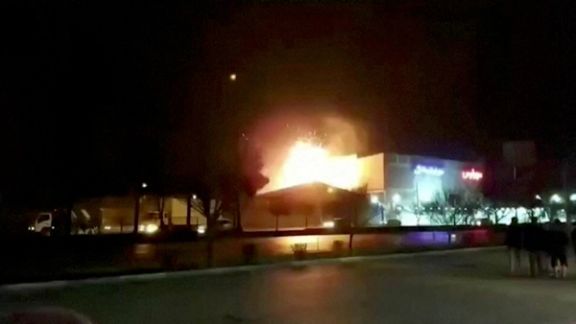
Following the drone attack on an Iranian military facility on Saturday. Aircraft targeted a convoy of trucks crossing from Iraq to Syria carrying Iranian cargo.
Both attacks seem to have been conducted by Israel and Iranian officials except denying damage, have so far not issued their customary threats against Israel. While saber-rattling by IRGC commanders against Israel may still take place, so far, they have been silent, amid the embarrassing public fallout from the attack.
However, Mohammad Marandi an influential regime insider tweeted, “Not a good week for the apartheid regime [Israel] either at home or abroad.”
Those Iranians who have been protesting for more than four months against the clerical regime were quick to point out the inability of the Revolutionary Guard to defend its own military installations hundreds of kilometers from the nearest border.
It is not clear what the role of military installation in Esfahan was. The Iranian defense ministry said that it was an ammunition production center, while other reports pointed to drone and possibly missile production.
However, media controlled by hardliners in Iran continued to publish news about Israeli “barbarity” against Palestinians. Iranian foreign minister Hossein Amir-Abdollahian held a call with Palestinian militant leaders of Hamas and Islamic Jihad to express support after bloody events in the past few days, Tasnim news agency linked to the Revolutionary Guard reported.
Ziyad al-Nakhalah the leader of the Islamic Jihad thanked Amir-Abdollahian for “the principled positions of the Islamic Republic in defending the Palestinian people and the Islamic resistance.” He added, “We are proud of positions [taken by] the Islamic Republic.”
Government controlled media in Tehran claimed that the 25-truck convoy attacked on the Iraqi-Syrian border was carrying flour and food, while the route taken is a customary juncture for weapons deliveries to Iranian proxies in Syria and Lebanon. Suspected Israeli attacks have targeted trucks and warehouses near the Iranian controlled al-Qaim border crossing multiple times.
Al-Arabiya that first reported the attack said that the aircraft first fired a warning shot to give a chance to the truck drivers to leave their vehicles. A Europe-based Syrian activist and researcher reported the trucks belonged to Iranian proxy militias, and the attack also targeted a meeting of Iranian commanders inside the Syrian border region.
Following a report by the Wall Street Journal Sunday, the New York Times also quoted US officials that the drone attack in Esfahan on Saturday was the work of the Mossad.
The NYT also mentioned that the facility might have been related to missile production and referred to Iran supplying Russia with drones used against Ukraine, as well as possible missile deliveries to Moscow in the future.
Major American media quoting US officials about Israel having conducted the attack seemed to be an attempt to highlight that the United States was not involved. But large joint military drills with Israel last week are highlighted in Iranian media. The Islamic Republic is bound to see the attack as part of expanding US-Israeli close cooperation.
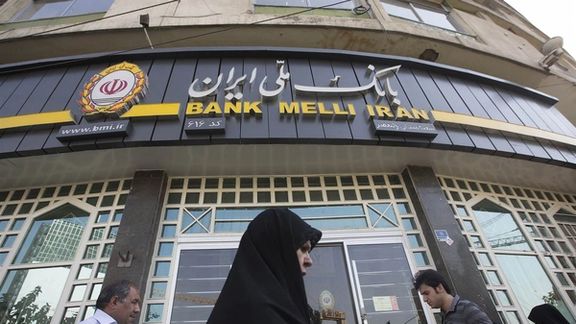
A new report says an Iranian governmental bank has given over 150 trillion rials – roughly $500 million – in loans to foreign entities likely to those of Lebanon, Syria, and Venezuela.
Bank Melli Iran, known as the first national and commercial retail bank of Iran, has recently published an advertorial on its financial statements for the first six months of the Iranian year (started March 21, 2022) as a way to promulgate its achievements and advertise the conduct of its manager, Mohammad-Reza Farzin who was recently appointed the governor of the Central Bank of Iran (CBI).
In February 2022, Farzin had claimed that the accumulated losses of the bank fell from $2.3 billion to $2.2 billion (based on exchange rate at the time) with him at the helm.
However, according to the 99-page report, the accumulated losses of the bank increased again in 2022 to roughly $2.5 billion.
Despite these losses, by late July of last year, the bank had paid over 182 trillion rials (roughly about $600 million) of loans to individuals and companies abroad. The figure was about 20 trillion rials in the previous year. Considering the sanctions and the lack of access to SWIFT banking system, it seems that these funds are mostly related to countries like Venezuela, Syria and Lebanon, wrote economic journalist Hirsh Saidian in an article published on Aftab News on Saturday. The report said that from March to July about 18 trillion rials – or about $60 million – was paid to a small bank called the Federal Bank of Lebanon, which seems to be under US sanctions.
The bank has not yet confirmed or denied this issue, nor provided any details about the recipients of the funds. In addition to lack of transparency in the country’s banking system, the government has been criticized for giving free aid to projects in Hezbollah-controlled southern Lebanon and Houthi-controlled parts of Yemen despite high inflation and lack of investment in Iran's own domestic projects.

Lebanese media reported late in December that Hezbollah is facing financial problems due to the current protests across Iran, as it cannot import Iranian goods to sell at a discount to its supporters. Makram Rabah, a Lebanese political activist, emphasized in an interview with Iran International that the consequences of the uprising of Iranians against the regime could now be seen in Lebanon. He said the dire situation of the Islamic Republic, as the biggest financial and political supporter of Hezbollah, causes this group to lose the ability to stand on its own feet.
The Bank Melli report did not elaborate on why and how a bank with such a huge amount of loss is still providing loans to entities linked with its proxy forces in the region. The report provides a rare glimpse into the opaque workings of Iranian banks, which usually serve the foreign and domestic policies of the Islamic Republic.
Moreover, some experts have claimed that the accumulated loss of the bank is actually 2 quadrillion rials (over $6 billion), which has been the result of years of corruption, mismanagement and giving loans to influential people and projects without economic justification, the article added. Such losses have caused banks to rely more on the resources of the central bank, making it print money that fuels the over 50-percent inflation rate.
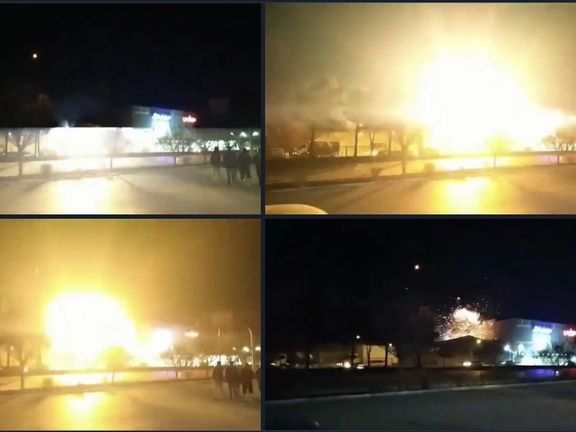
Israel carried out the drone attack on an Iranian military center for research and development midnight Saturday, the Wall Street Journal said in an exclusive report.
The attack targeted what some sources said was Material and Energy Laboratory of Esfahan with what the defense ministry said were “small drones.” Videos citizens sent to Iran International showed explosion, although the government claimed its air defenses had fended off the attack.
The WSJ quoted unnamed US officials and people familiar with the operation that the drone attack was carried out by Israel.
Small or quadcopter drones, however, cannot fly hundreds of kilometers to reach Esfahan, located in central Iran. If indeed the attack was carried out with small drones, it would mean operators were present on the ground, in Iran.
Israel began targeting Iranian nuclear and sensitive targets since July 2020, often with devastating results, through sabotage operations. Therefore, it was assumed that it had agents in operating in Iran.
The attack on Saturday comes as the United States and Israel have expanded close military coordination, including drills just days earlier, as well as discussing ways to combat Iran’s capabilities.
Tehran’s supply of large, kamikaze Shahed-136 drones with a 45-kilo warhead to Russia are a concern for the US and NATO. Russia has used hundreds of these drones to target Ukraine’s civilian infrastructure.
THE WSJ journal quoted Israel’s top general Herzi Haveli last week that Israel and the US “were preparing for the worst.”

After a gunman assaulted Azerbaijan’s embassy in Iran’s capital Tehran, Baku says it is evacuating staff and family members from the country.
On Sunday, Azerbaijan’s foreign ministry labeled the attack, in which a security guard was shot dead and two others were wounded, as an "act of terrorism," adding that the embassy will be evacuated immediately.
A video has been released on social media, showing a truck outside the embassy loading furniture at night. It is not yet clear whether the embassy will continue to function.
Police in Tehran says it arrested the attacker at the scene and authorities condemned Friday's incident, claiming that the gunman appeared to have had a personal, not a political, motive. But Azerbaijan summoned the Iranian ambassador and media in Baku seemed eager to portray the incident as a terror attack, claiming the assailant was a member of the Revolutionary Guard.
Azerbaijani media outlet Trend News Agency reported on Friday that “the perpetrator of the incident, identified as Iranian citizen Yasin Hosseinzadeh, and there are suspicions that he is related to Iran's special services, especially the IRGC.” It added that Iranian security forces guarding the embassy did not try to stop the attack.
Earlier, the Azerbaijani foreign ministry said the shooting was the result of Tehran failing to heed its calls for better security. CCTV footage of the incident showed the attacker forcing his way into the embassy building and shooting at two men before a third embassy employee grappled him away.
According to an article in Trend, the incident at the embassy occurred as “part of Iran's policy of hostility towards Azerbaijan.” A deputy of the country’s parliament said, "Iranian televisions and radios continuously promote hostility towards Azerbaijan. This once again shows that the Iranian state has a hand in the terrorist incident at the embassy, because it is known that Iran has always been a nest of terrorism and is one of the main countries that support terrorism. The terrorist incident against our embassy proved this once again."
Iran’s state media broadcast confessions by a grey-haired man identified as the assailant, who claimed he attacked the embassy believing that his wife was held inside the building. The embassy staff had given him a written statement attesting that she was not there, but the man said he was sure his wife was in the building and attacked the embassy to prove that.
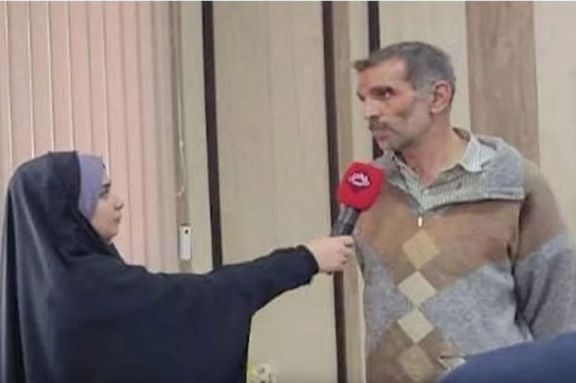
Apparently his wife, who was an Azerbaijani citizen, left him ten months ago and he believed she found refuge inside the mission.
The Islamic Republic’s state broadcaster also talked to the seven-year-old son and 14-year-old daughter of the family, who purportedly were in the car outside the embassy. The girl said she had told her father that their mother was not in the embassy, adding that she was in contact with her mother in Azerbaijan and spoke to her on the phone about 10 days earlier.
Iranian President Ebrahim Raisi called for "a comprehensive investigation" of the incident and sent his condolences to Azerbaijan and the family of the dead man, identified as First Lieutenant Orkhan Rizvan oglu Teymurov. During a phone call with his Azeri counterpart late Saturday, Raisi said Tehran and Baku have inseparable historical relations and will not allow those relations to be affected by the two countries' ill-wishers.
Member of the Iranian parliament’s presidium Ali Nikzad has promised that necessary investigations will be done regarding the attack. The Iranian foreign minister also held a phone call with his Azeri counterpart, calling for the return of the country’s ambassador to Iran.
The incident came amid increased tensions between the neighboring countries triggered by territorial conflict between Azerbaijan and Armenia and Yerevan as well as over Baku's decision this month to appoint its first ever ambassador to Israel. Iran is dangerously implicated in regional tensions centered on Azerbaijan-Armenia that are exacerbated by fall-out from Russia’s war in Ukraine.
In November, at a Baku conference ‘Along the Middle Corridor,’ Azeri President Ilham Aliyev launched a broadside against Iran, his toughest so far since relations soured over Iran’s role in the 2020 Azerbaijan-Armenia war, when adjacent Iranian military exercises followed the Azerbaijanis capturing areas around the disputed Nagorno-Karabagh enclave and along the Iran border. Tehran-Baku tensions have simmered since the 2020 war, when Iran moderated its past support for mainly Christian Armenia due partly to domestic pressures from both ethnic Azeri and Shia clerics supporting fellow Muslims.
“We worked with three presidents of Iran, [Mohammad] Khatami, [Mahmoud] Ahmadinejad, and [Hassan] Rouhani,” Aliyev said. “For all these years there was no situation similar to the current one. Never has Iran had two military exercises near our borders within a few months. There have never been such hateful and threatening statements against Azerbaijan,” he said, referring to warnings from President Ebrahim Raisi and other leaders against any border changes or threats to Iran’s transit route to Armenia, which is vulnerable since 2020 changes. Iran carried out more military drills along the border October, when Foreign Minister Hossein Amir-Abdollahian also visited Yerevan.